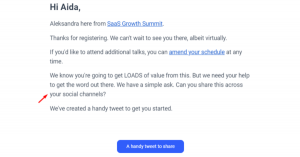— August 7, 2019
It doesn’t take much effort to find various studies proving that digital ads are ineffective. One study found that only 12% of display ads are ever looked at, with just 4% being viewed for over a second. That’s certainly less than ideal when you’re trying to get the attention of your target accounts.
But low success rates haven’t deterred marketers from investing in digital advertising. In 2019, digital ad spending is expected to increase almost 20% to $ 129 billion.
Don’t just increase your digital ad budget and hope for the best. By investing in third-party intent data, you can fix three of the main reasons that digital ads fail.
1. You Treat Digital Ads as a Cure-All
One reason digital advertising fails is that companies treat it as a shortcut to attention. You invest some money in the Google Display Network and expect to see the clicks and conversions start coming through. In reality, digital advertising succeeds when it is just one piece of a larger engagement strategy.
When your prospects see display ads for products, services, or brands they’ve never heard of, they’re more likely to ignore the messaging. According to Rand Fishkin, the key to solving this digital advertising problem is to “invest in organic channels — content or SEO or press and PR or sponsorship or events, what have you, anything that can get your brand name and the names of your product out there.”
Then, once your prospects are more aware of your messaging, you can expect digital advertising to land more successfully. However, this also means you have to be targeting prospects who are a bit further down your funnel.
Intent data gives you the foundation of knowledge necessary to narrow the focus of your digital advertising campaigns, increasing conversion rates despite smaller reach.
2. Your Placements Aren’t Specific Enough
The more specific you can make your digital ad placements, the better. When you’re using the Google Display Network, there is significant room for error because it covers so many websites. Even if you focus on ideal keywords, your digital ads could end up on completely irrelevant websites.
One glaring mistake would be to set your campaign to place ads automatically. Managed placements give you control over display keywords, topics, demographics, and even devices. However, it’s not enough just to select managed placements over automatic ones. Having your digital ads noticed by ideal prospects requires even greater control.
Choosing specific websites for ad placements is the best way to increase your success rate. The problem is that many marketers don’t have such granular data about which websites have the biggest impact on the buyer journeys of their prospects.
With intent data, you can gain a deeper understanding of how your in-market prospects are conducting product research. When you know exactly which sites are most important to your target audience, you can manually add these placements to your ad campaign and improve clickthrough and conversion rates.
3. You Aren’t Focused on Prospect Pain Points
Digital advertising campaigns have to walk a fine line between engaging and creepy. You want to successfully retarget prospects that have shown purchase intent. But you don’t want to come off as creepy when your ads keep popping up in front of buyers wherever they go online.
Digital ads don’t come off as creepy just because they show up following certain behaviors, though. People are used to the concept of cookie tracking. The problems start to emerge when your ads aren’t engaging enough.
When your digital ads are focused entirely on your brand and your product, prospects are less likely to engage with the content. Being able to personalize the ads toward specific pain points can catch the attention of prospects more effectively. Create your ad campaigns with the customer in mind and you’ll come across as helpful rather than creepy.
With intent data, you can learn exactly which topics are most important to prospects at the moments of greatest purchase intent. Instead of trying to create generic ads that apply broadly to every campaign, you can use intent data to personalize messaging within different segments.
Getting Started with Intent Data
Successful digital ads are specific, relevant, and integrated into larger marketing strategies. It’s not just about investing more money than your competitors and casting a wide net.
If you want to change the narrative around digital advertising, you can’t just go through the motions. You need to take advantage of intent data to really understand who you’re targeting, when you should be targeting them, and where they’re most likely to convert.
Do you know which specific companies are currently in-market to buy your product? Wouldn’t it be easier to sell to them if you already knew who they were, what they thought of you, and what they thought of your competitors? Good news – It is now possible to know this, with up to 91% accuracy. Check out Aberdeen’s comprehensive report Demystifying B2B Purchase Intent Data to learn more.
Digital & Social Articles on Business 2 Community
(7)








